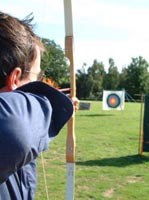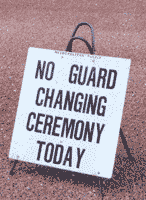One of the most important things any safety professional can do upon being terminated is to take a few hours to reflect on the job he or she has done.
Do everything you can -- and there's a lot that you can do -- to get through this difficult time. You and your employer(s) will be stronger for it.
Brutalized by the spiraling financial crises of 2008, most of us are thrilled the year has closed. Our sad awakening is that the pain of shrinking budgets, job losses, and more work with fewer resources continues for 2009! Stress is higher than usual on all parts of the workplace chain.
2008 is coming to an end fast with many lessons learned this year, from natural disasters and financial disasters alike as the U.S. economy weakens. Maintaining a program and employees' interest during a struggling economy is challenging. It requires planning and thought to get your safety message to each employee in a timely and appropriate format to keep them focused on safety at work.
Surveying the dismal outlook for the economy in the upcoming months (years?), many of us ol' timers know safety is often one of the first areas managers cast a "cutback" eye upon when the economy turns sour. Many industries already are seeing this, with open safety positions being left dormant or abolished. Budgets are being slashed; and the use of extra skilled and unskilled help is being reduced or eliminated.
Warriors? Safety seems like warriors sometimes, the way we champion causes to reduce employee injuries. We display dogged determination for working in the future, planning long before other teams consider new standards of working safely. Problem solvers? You bet. We work on any problem and try to resolve it, often with no fanfare.
If you want it done, involve safety. As anyone in the safety profession knows, we are super-busy and constantly asked to take on new responsibilities. Why? Because we work through any obstacles and get the job done! Safety folks are organized, focused, overworked, and get our jobs done with less than enough financial backing. We are creative team players.

Budgeting is easily one of the worst tasks we safety professionals have to do. Without the assistance of a crystal ball or a Ouija board, we are trying to forecast the future needs and crises of our staff from a safety point of view. We want our budget to be realistic, manageable, and taken seriously by our corporate managers while accomplishing needed goals.

Managing a safety program can be a struggle on the good days. All too often, managers and supervisors want to ensure the program is known as "your safety program" rather than the company's or department's safety program. That "hands off" approach will cause many elements of the goals and initiatives to stall quickly, and it sets up a method for blame to begin when things fall by the wayside.

It is a plain fact of the safety profession: Run the program, or it will run you (often, into the ground). Safety is critical to the success of any organization, and keeping everything moving takes a lot of work and thought and a little luck.

Admit it: All of us want a model safety program worthy of our talent, efforts, planning, and management ability. We begin each cycle, whether quarterly or annually, with a plump list of programs and specifics to create the perfect safe working environment. Then, the reality spheres of time, cooperation, and funding set a collision course with our goals, and before we realize it, time has flown by and we are no closer than before. So the question is; how do we accomplish our long-range goals for safety?

With the hint of springtime comes a renewal of energy and a newfound determination to get ahead of all those safety job demands! We build and rebuild our "to do" lists and scrutinize each entry, trying to improve the great and bring up to compliance the not-so-great portions of our company's safety program. (Anyone who believes his program cannot be improved is sadly mistaken!)

We see horrifying images everywhere: devastating ice storms, hurricanes, traffic pile-ups, crumbled buildings and sinkholes, mall shootings, and sometimes catastrophic workplace accidents. Are your workers really prepared to be safe? (And what about the looming threat of a widespread pandemic flu?) We are living in an instant-access, drive-by world these days. When we need a set of gloves, a first aid kit, a faceshield, or a respirator, we stop by the local hardware or big-box store and get it immediately, or we order online and await delivery within hours. Viewing icebound Oklahoma landscapes last month should have given us pause: What if there are long-term, serious power and traffic interruptions?

At least 20 million people, including 500,000 U.S. citizens, died in the 1918 influenza pandemic. Today, as many as 36,000 Americans continue to die each year of what's commonly known as the flu and more than 200,000 are hospitalized. Most outbreaks in North America occur between October and May. The peak season is usually late December to early March.

As I See It
CHANGES are commonplace in the safety profession. We are daily faced with constantly changing and improving technology in our profession-- how quickly we seem to have moved from Stone Age to Star Trek technology in recordkeeping and data storage! Occupational standards are generally in place, with needed updates coming in the future.
As I See It
Thoughts from OH&S Technical Editor Linda J. Sherrard, MS, CSP
Rust Constructors, a Birmingham, Ala.-based full-service merit shop construction and maintenance company, has received a National Safety Excellence Award from Associated Builders and Contractors (ABC), an association representing more than 24,000 merit shop construction and construction-related firms in 78 chapters across the United States.